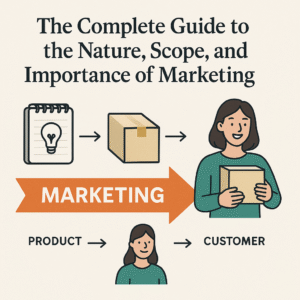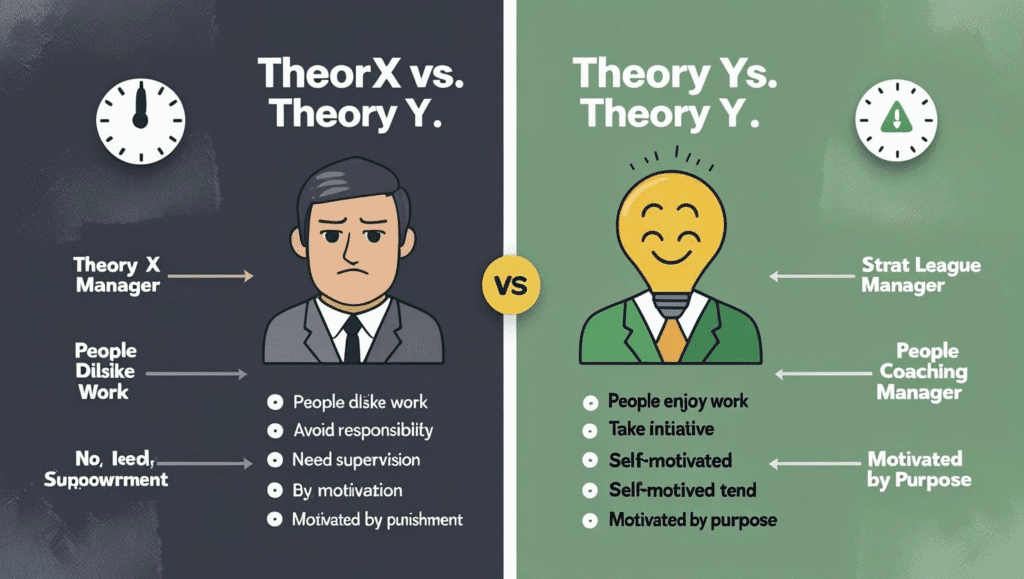The Complete Guide to the Nature, Scope, and Importance of Marketing
Marketing is often misunderstood as simply advertising or selling. In reality, these are just small components of a much larger, strategic function. True marketing is the lifeblood of a successful organization—a comprehensive process of understanding and delivering value that begins long before a product is made and continues long after a sale is complete.
“Marketing is the activity, set of institutions, and processes for creating, communicating, delivering, and exchanging offerings that have value for customers, clients, partners, and society at large.” – American Marketing Association
The Nature of Marketing
-
A Customer-Centric Process
Marketing originates with the customer. It’s about identifying their needs, wants, and problems, and then creating a solution. The entire process, from product development to promotion, revolves around the end-user.
-
Both an Art and a Science
The science of marketing lies in data: market research, consumer behavior analysis, and performance metrics. The art is in the creative execution: compelling storytelling, memorable branding, and innovative campaign design.
-
A System of Value Exchange
At its core, marketing facilitates a mutually beneficial exchange. The customer gives something of value (money, time, data) and receives something of greater value in return (a product that solves a problem, a service that brings joy).
-
A Dynamic & Evolving Field
Marketing is not static. It constantly adapts to new technologies (from print to digital), changing consumer behaviors, and global market shifts. What works today may be obsolete tomorrow, requiring continuous learning and adaptation.
The Scope of Marketing
What can be marketed? The scope is vast.
Goods
Services
Events
Experiences
Persons
Places
Properties
Organizations
Information
Ideas
The Importance of Marketing
To the Business:
Drives Revenue Generation
Effective marketing is the primary driver of sales and revenue. It creates demand and guides customers through the purchasing process.
Builds Brand Reputation
Consistent, strategic marketing builds brand awareness, trust, and equity, which are invaluable long-term assets.
Informs Strategic Decisions
Market research provides critical data about customers, competitors, and market trends, guiding decisions in product development, pricing, and expansion.
To the Consumer:
Raises Awareness of Solutions
Marketing informs consumers about products and services that can satisfy their needs and solve their problems.
Provides Utility and Satisfaction
It helps create utility by making products available at the right place (place utility) and time (time utility), leading to higher customer satisfaction.
To Society:
Drives Economic Growth
By stimulating demand, marketing fuels production, which in turn leads to economic activity and growth.
Creates Employment
The marketing industry is a major employer, creating jobs in advertising, research, public relations, sales, and brand management.
Frequently Asked Questions
What is the difference between marketing and selling?
Selling focuses on the transaction—persuading a customer to buy an existing product. Marketing is a broader process that focuses on the customer’s needs—researching, creating, pricing, and delivering a product that sells itself because it provides superior value.
What are the 4 Ps of Marketing?
The 4 Ps, or the Marketing Mix, are a foundational model for marketing strategy. They are: Product (what you sell), Price (how much you sell it for), Place (where you sell it), and Promotion (how you communicate about it).
How has digital technology changed the scope of marketing?
Digital technology has massively expanded the scope. It introduced new channels (social media, search engines), new tools for data analysis, and enabled hyper-personalization and two-way communication with customers, making marketing more measurable and interactive than ever before.
Is marketing important for non-profit organizations?
Absolutely. Non-profits market to attract donors (customers), recruit volunteers, and promote their cause or idea to the public. The principles of understanding an audience and communicating value are just as critical for a charity as they are for a corporation.


